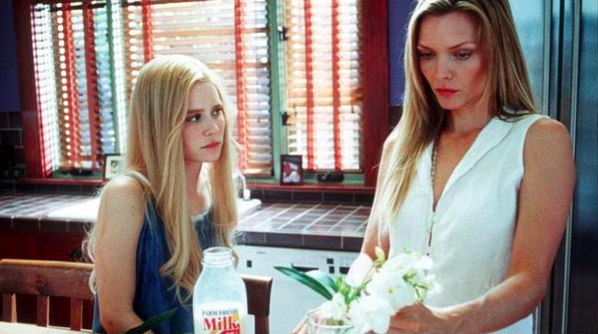Words by Laila Rumbold – Kazzuz
Today, I want to talk about Thomas Newman, because Finding Nemo score notwithstanding, I would wager a guess that he is even less of a household name than other film composers, and his work is clearly worth more appreciation than it gets. To me, Thomas Newman’s music is the sound of every noughties kid’s life. Anyone who sat through a screening of Pay It Forward in a classroom in the early 2000s was, perhaps unknowingly, introduced to the signature percussive style of Thomas Newman’s scores, an unforgettable sound that found its way into the commercial cinema goer’s consciousness just a year prior with the release of Sam Mendes’ 1999 suburban drama American Beauty.
Anyone who has watched Mendes’ film will understand the unparalleled manner with which Newman scores his films. He seems to accent the mood on screen, allowing the actors’ performances to breathe and complimenting the pace of the cinematography so the film’s narrative is leant yet more poignance than is inherent to its script. All one has to do is spend a couple of hours reading the concise, perfectly crafted American Beauty screenplay by Alan Ball to appreciate how Thomas Newman manages to elevate an already perfect piece of art to such high standards as to render it worthy of its eight Oscar nominations, including Best Original Score.
Newman was born in Los Angeles to composer father Alfred Newman, the man responsible for the iconic 20th Century Fox Fanfare tune. He belongs to a Hollywood film-scoring and composing dynasty comprising of at least seven other notable names including Randy Newman of Toy Story scoring fame. That Thomas Newman managed to carve out such an illustrious and original film scoring career for himself seems both inevitable and impossible; surely having such an indomitable family background is bound to make a composer of you, yet how could you compare to a father who with his Fanfare, essentially wrote the tune to every movie? But Thomas Newman, against all odds, manages to, despite his claim in a 2016 Oxford Union interview that it “never occurred to him” that he would ever even “be creative”, let alone follow in his father’s footsteps.
How the score to American Beauty failed to actually win the 1999 Academy Award is unthinkable to me. The fact that Newman has been nominated fifteen times for an Oscar for Best Original Score and is yet to win speaks to the need I feel to write such an appreciation piece as this. His score for American Beauty did win him a BAFTA for Best Original Music. This said, the significance of Newman’s scores really transcends award ceremonies. Of course industry-wide recognition is important to the professional legacy of a composer, but the fact that he is responsible for the sounds of The Shawshank Redemption, American Beauty, Green Mile, Erin Brockovich, Pay It Forward, Road to Perdition, Finding Nemo and A Series of Unfortunate Events to name a few, speaks volumes about the kind of lasting legacy his scores have already established for him. This is without even mentioning his vast success in T.V. scoring with such classic titles as Six Feet Under, Angels in America and more recently Aaron Sorkin’s The Newsroom. The work itself achieves more than an Oscar can in signifying its own brilliance, and the fact that Newman has scored so many classic family films as well as emotional, characteristically late nineties/ early noughties American dramas has ensured that his work is recognisable amongst cinema goers of all kinds. His style is unmistakable, and bar his recent reunion with Mendes in 2019 film 1917 in which his style deviates toward a mood I would quantify as more Hans Zimmer-meets-Laurence of Arabia, Newman’s iconic percussive sound is pervasive throughout Hollywood cinema and timeless in its appeal. One piece of art I would particularly like to draw the reader’s attention to though is a lesser-known work; Newman’s score for 2002 film White Oleander. Directed by Peter Kosminsky and based on Janet Fitch’s novel of the same name the film stars Michelle Pfieffer as Ingrid, the cold-hearted artist mother of Astrid, a girl who goes on to suffer abuse at the hands of a circulating ring of foster mothers. The filmography and narrative themselves are beautiful, and while watching you get the sense as you do with many Thomas Newman-scored films, that it just seems to make sense that he would stamp his signature sound on this particular piece.
Perhaps it’s something in the colour pallet of the cinematography, the coldness of the suburban characters, or the fictional world’s apparent void of compassion that can only be filled by the hopeful but scaled down tones of a percussive score that teases at a sympathetic resolution for the protagonist but never promises too much, a haunting quality that can be heard in the track Plain Denim Dress. The score seems to be in tandem with the film’s characters; “people disappoint”, a mother tells her daughter, and Newman’s score too contains a sense of terse trepidation, a distrust of its own surroundings as it threatens to expand but remains contracted, something perhaps best felt in the track Durer Rabbit. Like Astrid, we can feel a sense of a better life looming in the shadows but always unreachable, a mood existent in the novel, and which Thomas Newman has managed to heighten for its film manifestation. I implore you to watch White Oleander, or give the soundtrack a listen, or read the novel. Better, yet, do all three! I read the novel as a teenager in 2012, then again in 2015 and plan to read it again soon. It’s one of those narratives that sticks with you, not because it’s necessarily perfectly executed, but because it’s successful in achieving a mood, almost like a tone of colour that really sticks in your mind (White Oleander seems to feel indigo to me!). I think it’s one of those rare novels to film successes, and a perfect example of Thomas Newman’s finesse when it comes to what he has called a “balancing act”. He strikes the narrative’s mood without tipping over into pulling focus, something I think we might take for granted but is actually a fine art, as evidenced by many overdone film scores (Interstellar, anyone?)



